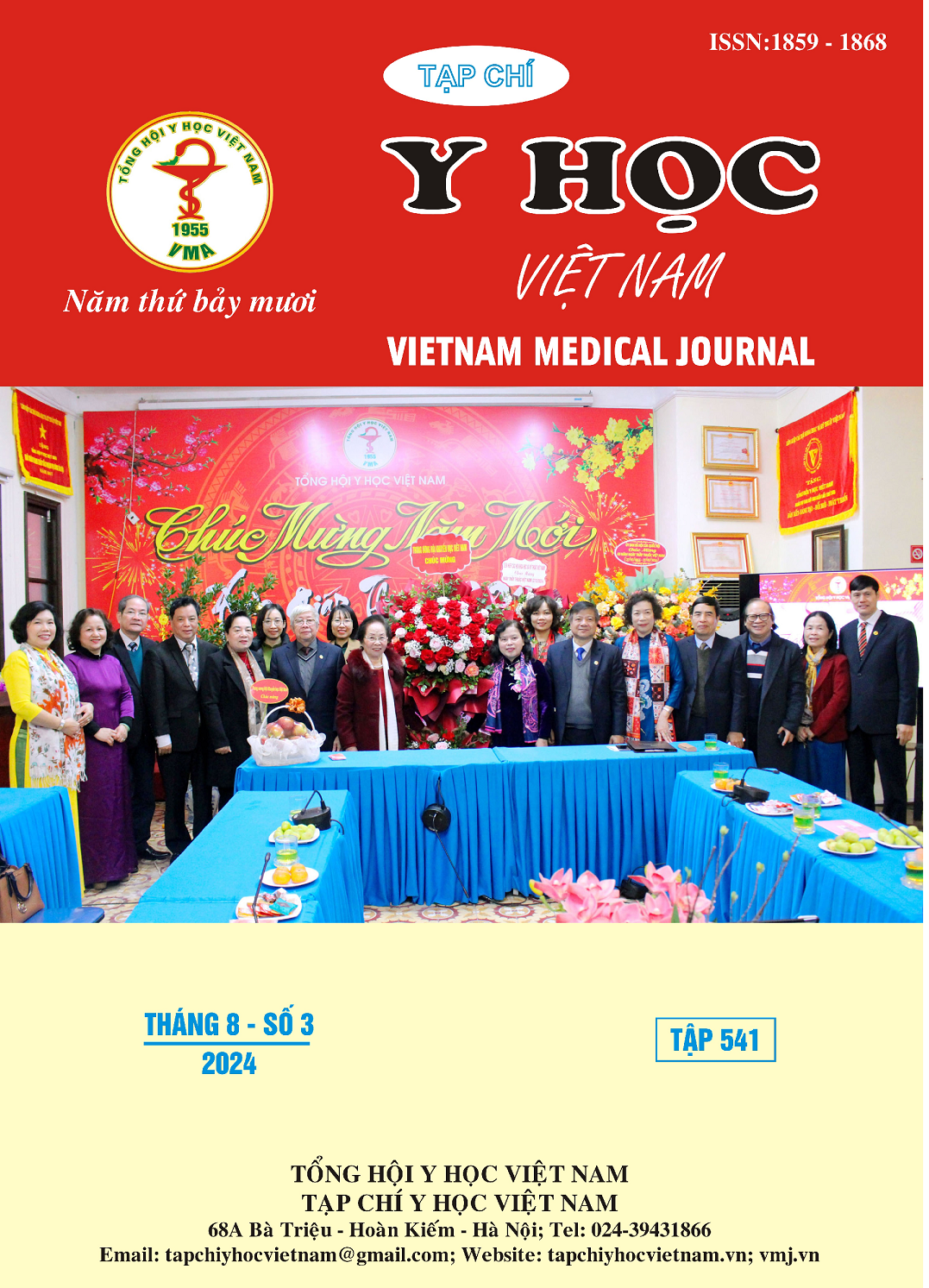THE CORRELATION BETWEEN CHANGES IN SKIN TEMPERATURE OF THE SHOULDER AREA AND THE RANGE OF MOTION OF SHOULDER JOINTS AFTER PRACTICING SHOULDER JOINT MOVEMENT EXERCISES ON STUDENTS
Main Article Content
Abstract
Objectives: This study aimed to investigate the correlation between changes in the range of motion of shoulder joints and the skin shoulder area after performing shoulder joint exercises 3 times, 5 times in Traditional Medicine at the HCMC Hospital for Rehabilitation and Occupational Diseases. Subjects and methods of study: The cross-sectional study was conducted from February 2024 to May 2024. Convenient sampling was employed to recruit 60 healthy students aged 18 to 26 years who met the sample selection criteria and exclusions at the Functional Rehabilitation Hospital and Occupational Diseases in Ho Chi Minh City. Volunteers underwent shoulder joint range of motion measurements and shoulder skin temperature assessments conducted by expert physicians (with ≥ 5 years of experience) using a goniometer and FLIR C5 infrared thermal camera. Results: There is a strong and very strong correlation between changes in skin temperature in the shoulder area and changes in range of motion before and after performing shoulder joint mobilization 3 times and shoulder joint mobilization 5 times. Conclusions: The change in skin temperature of the shoulder area strongly correlates with the change in range of motion and improvement in circulation at both shoulder joints when performing exercises that modify the range of motion in students. Shoulder joint movement 3 times is safety and effective.
Article Details
Keywords
shoulder range of motion, shoulder skin temperature, shoulder joint movement 3 times, 5 times, correlating the range of shoulder joint motion and shoulder temperature
References
2. Đỗ Thị Thu Hiền. Thực trạng rối loạn cơ xương chi trên ở nhân viên văn phòng tổng công ty Bảo đảm an toàn hàng hải miền Bắc năm 2019. 2020
3. Nguyễn Minh Đặng. Kỹ thuật xét nghiệm và vệ sinh lao động và bệnh nghề nghiệp: Chương trình đào tạo nâng cao. Y học; 2012
4. Võ Trọng Tuân, Nguyễn Thị Anh Đào. Xoa bóp bấm huyệt. NXB Y học TP Hồ Chí Minh; 2022.
5 Satpute K, Reid S, Mitchell T, Mackay G, Hall T. Efficacy of mobilization with movement (MWM) for shoulder conditions: a systematic review and meta-analysis. Journal of Manual Manipulative Therapy. 2022;30(1):13-32.
6. Meyer MR, Clegg DJ, Prossnitz ER, Barton M. Obesity, insulin resistance and diabetes: sex differences and role of oestrogen receptors. Acta Physiol (Oxf). 2011;203(1):259-269. doi:10.1111/ j.1748-1716.2010.02237.x.
7. Johnson JM, Rowell LB, Brengelmann GL. Modification of the skin blood flow-body temperature relationship by upright exercise. J Appl Physiol. 1974;37(6):880-886. doi:10.1152/ jappl.1974.37.6.880.
8. Ethan R. Nadel et al. Factors affecting the regulation of body temperature during exercise. Journal of Thermal Biology: 1983;8: 165-169.


